#Kazakh Eagle Hunter
Explore tagged Tumblr posts
Text

Kazakh Eagle Hunter
35 notes
·
View notes
Text
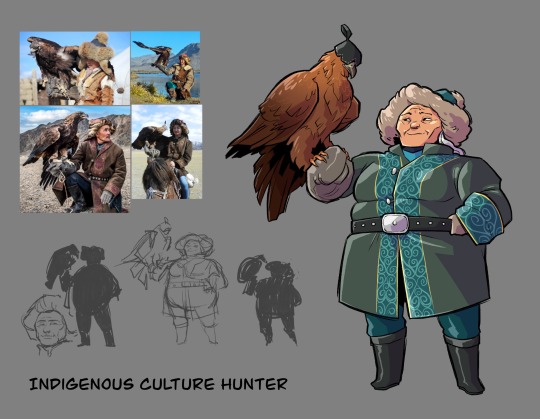

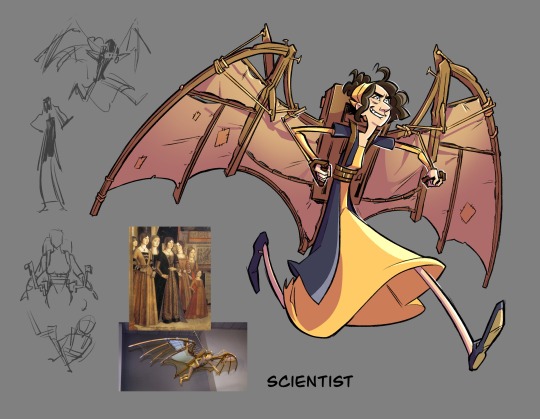


5 character prompts i got in a concept design class. i drew a little old kazakh lady (already had the reference material) a murder robot who's been converted into a robot nanny, a renaissance era teen girl inventor, ted gillman attorney at law, and the Ryu of a fighting game i made up about drag queen martial artists
#my art#character design#oc stuff#for the last two characters who i already had in my mind and had just never really drawn before#other people also did kazakh eagle hunters for this project which burned my ass a little but i didn't have any better ideas#i think the other ones are fairly novel although there's some amazing cartoonists in this class who blow me out of the water LOL
121 notes
·
View notes
Text

📷 Probe around the globe
Ashol-Pan, daughter of a famed Kazakh eagle hunter.
10 notes
·
View notes
Photo
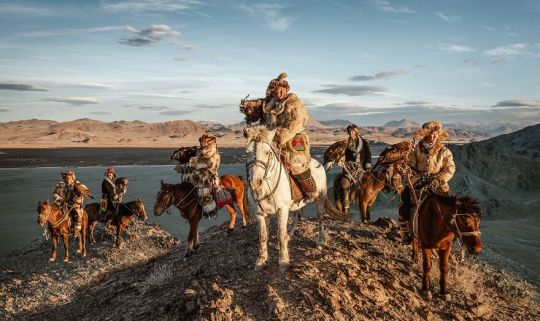
A journey to the border between Kazakhstan and Mongolia, among the Altai's mountain, heading to the local Kazakhs Muslim community in search of a certainer person.... The honorable "Burgedchins" in Kazakhs word.... "Burgedchin" or "Eagle Hunters" are pride hunters who inherit their hunts with their Golden eagle for more than 250 years. Trained to hunt since 10 years old in a harsh extreme environment with their eagles on a horse back. At -40 Celsius degree, only strong survives. This became the bond between hunters and his predators.
Photographer: Jatenipat Ketpradit
Budapest International Photo Awards 2022
#jatenipat ketpradit#photographer#budapest international photo awards#culture#kazakhstan#mongolia#altai mountains#kazakhs#muslim community#burgedchins#eagle hunters#golden eagle
6 notes
·
View notes
Text

Inktober 2024 Day 10: Nomadic
A Berkutchi, an eagle hunter of the Kazakh people. Photo ref by Ira Block Photography
#inktober#inktober 2024#ink#ink drawing#traditional art#art#artists of tumblr#inktober day 10#inktober 2024 day 10#inktober nomadic#nomad#nomadic people#mongolian eagle hunters#Berkutchi#kazakh#hunting#eagle hunting#horse#eagle
1 note
·
View note
Text
Can someone please, please draw Fingon as a badass Kazakh hunter with his golden eagle?
I mean, how perfect are these:


From this incredible photography collection by Kevin Pepper.
79 notes
·
View notes
Note
For the ask game!
9: What is your favorite thing to drink while writing?
20: What is the last thing you researched for a story?
9. Well thats gonna be a boring answer, but just plain old water lol. I have a water bottle near my desk that I sip when I draw and write. I dont really like coffee or tea, and I get bored of sugar fast so no cocoa or other drinks :')
20. Oof, good question. I think it was about Kazakh eagle hunters, how they live and how they handle their eagles. It was for a little hometown event fic for my Twst Shan Yu OC. And it's so interesting, go check it out if you have some time!

Thanks for asking :D
[ASK GAME]
104 notes
·
View notes
Text

Kazakh Eagle Hunter
38 notes
·
View notes
Text
Like I shouldn't be able to find your Tolkien elf's outfit with the same pose within two minutes of looking up "Kazakh eagle hunter" if you're not going to bother mentioning it in the description.
11 notes
·
View notes
Text
Daydream with me… Where’s the dreamiest place you’ve ever been? Spending time with Kazakh Eagle Hunters in the remote western reaches of Mongolia was, without a doubt, the kind of stuff of which dreams are made. Soft golden sunlight streamed downward across the wide, grassy steppe, as horses grazed and children played. Smoke from cookstoves wended skyward from individual “gers” (yurts) as herding families prepared butter tea and mutton stew within. Dogs barked, and lone motorcyclists herded yaks through canyons that made their way toward the snow-covered Altai Mountains. We rode there, amidst the wild and wind-whipped rock outcroppings, on horseback toward the peaks, to learn from champion Eagle Hunters their craft of tracking animals for meat and fur—a craft which has traveled downward generation to generation through the centuries. When I close my eyes and envision this day, the wind disappears, and the sunlight wraps me up, and I wonder to myself: is it possible I dreamed it?
#mongolia#mongol#goldeneaglefestival#wildlifephotography#birding#beautifulmatters#beautifuldestinations#wildhorses#travel
3 notes
·
View notes
Text

Kazakh-Turk female eagle hunter.
10 notes
·
View notes
Text

PHOTO: ERIC ESTERLE https://people.com/human-interest/national-geographic-pictures-of-the-year-contest-photos/
"Nine other photographers received honorable mentions for their photographs, which were taken all over the world — including a second photo that features an eagle, which was taken by Eric Esterle.
The image shows a nomadic Kazakh eagle hunter and his dog [sic] preparing for a hunt in the grasslands of Mongolia, which has been a tradition in the region for 3,000 years, according to the outlet."
13 notes
·
View notes
Text

A bald eagle arrives to steal a perch on a tree log that offers a strategic view of the shoreline at the Chilkat Bald Eagle Preserve in Alaska. When other eagles drag freshly caught salmon in from the water, these bystanders swoop in to take a share. "Hours of observing their patterns and behavior helped me capture moments like these,” says photographer Karthik Subramaniam, a software engineer with a passion for wildlife photography. Photograph By Karthik Subramaniam

In May 2021, the Fagradalsfjall volcano erupted in the Reykjanes Peninsula in Iceland for the first time in over six thousand years. The lava flow continued for six months, spreading hard black rock across the landscape. It was, says Riten Dharia, who captured this image, "an exhibition of the raw and awesome power of nature." Photograph By Riten Dharia
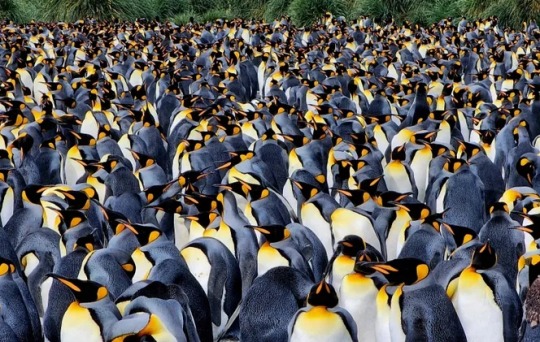
King penguins crowd together in the viewfinder of Rhez Solano on the beaches of Gold Harbour in South Georgia. The island sits in the remote southern Atlantic Ocean, not far from Antarctica, and hosts some 25,000 breeding pairs of king penguins, along with gentoo penguins, and elephant seals. Photograph By Rhez Solano
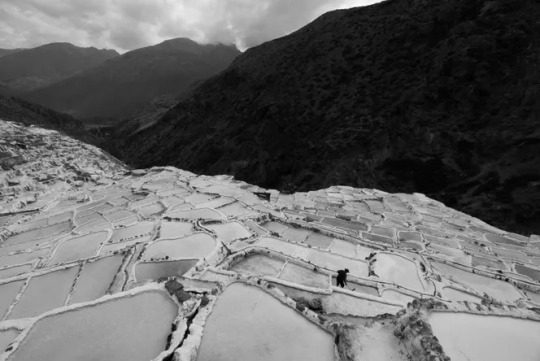
There are around 4,500 salt wells terraced into the hillside at the Salt Mines of Maras in Peru. The archaeological record shows that salt extraction likely began here before the Inca Empire, perhaps as far back as 500 AD. Today that tradition continues with the families who own wells, each of which produces some 400 pounds of salt per month. “The salt wells receive water through channels sourced by a salty underground spring nearby and once the water evaporates, the crystallized salt remains,” says An Li, who captured this picture. “Here, a salt miner is using a wooden rake to extract the salt." Photograph By An Li

Asiilbek, a nomadic Kazakh eagle hunter, preps his golden eagle, Burged, for a horseback hunt in the grasslands outside of Bayan-Ölgii, the westernmost province of Mongolia. The eagle’s training begins when fledglings are captured from their cliff edge nests and taught how to hunt for hare, fox, and even deer. The tradition stretches back 3,000 years. “For this image, I was lying on my stomach in the prone position looking through the electronic viewfinder at the edge of the stream,” says photographer Eric Esterle. “The ground shook as Asiilbek's horse passed less than a few feet away, splashing me with ice cold water. I remember covering my camera with my body and putting my head down.” Photograph By Eric Esterle
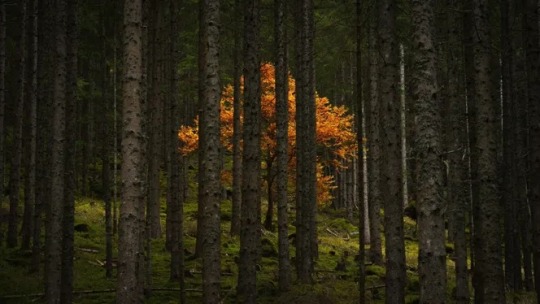
On a road trip through the Austrian Alps, Alex Berger spotted a one-lane road that wound into the mountains and looped back on the map. He followed it alongside a small stream lined with walls of forest when he spotted this golden tree blooming from between the trunks. There’s “a fantasy-ish inspired dimension for me,” says Berger, “which gives me goosebumps.” Photograph By Alex Berger
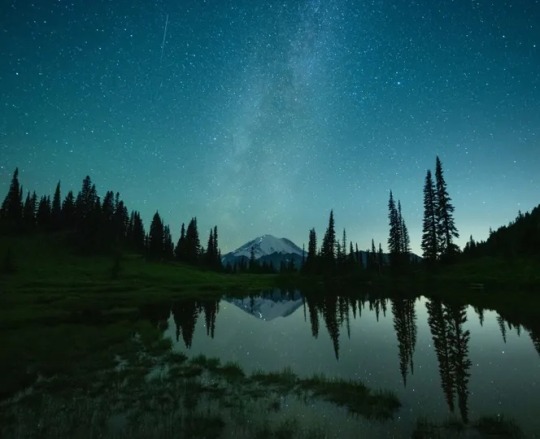
Sometimes a sleepless night is key to great photography. At approximately 3:40 a.m. on a frigid summer morning, photographer W. Kent Williamson snapped this image from Tipsoo Lake in Mount Rainier National Park, Washington. From across the still water, he could see a line of headlights as weary climbers approached the peak’s 14,411-foot summit—the culmination of a multi-day climb. "The night sky was unusually clear, and the Milky Way could be seen just above the mountain,” Williamson says. “I was surprised to see how bright the climbers’ lanterns were.” Photograph By W. Kent Williamson
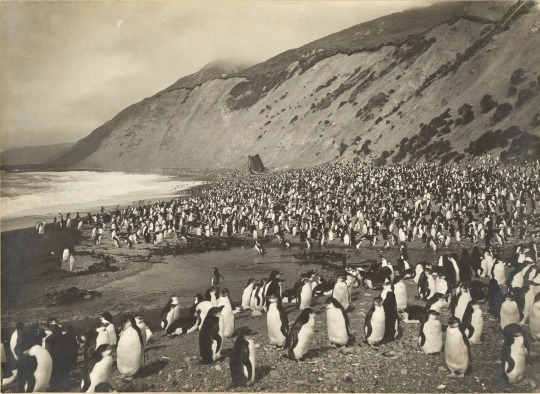
From Frozen Memories: Rare Antarctic Expedition images! A royal penguin rookery at Nuggets Beach on Macquarie Island. Photographer and adventurer Frank Hurley went on multiple voyages but his best-known images were taken when the Endurance was crushed in the ice during explorer Ernest Shackleton’s 1914 expedition. Photograph: Frank Hurley
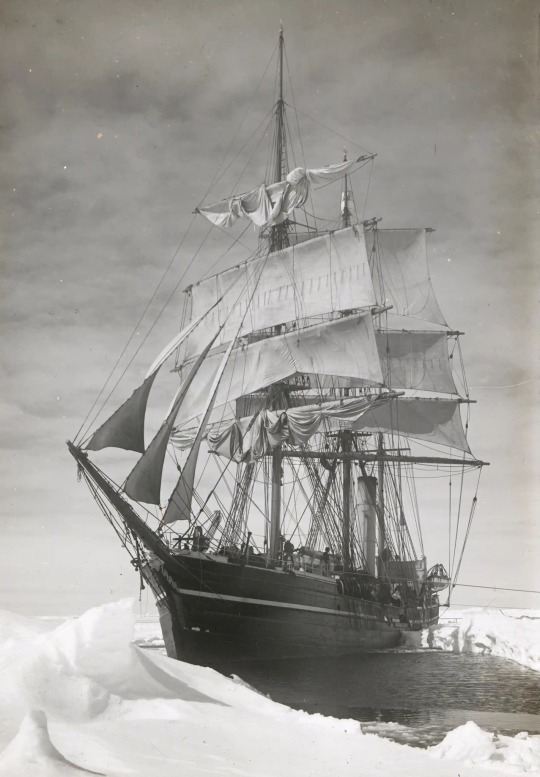
From Frozen Memories: Rare Antarctic Expedition images! The Terra Nova held up in pack ice during Robert Falcon Scott’s expedition to the Ross Sea and South Pole. Photograph: Herbert George Ponting
6 notes
·
View notes
Text
1 note
·
View note
Text

“The Last of the Eagle Hunters”
“As senior Golden Eagle hunters age out of the hunting tradition and younger nomads head to the city for opportunity, the custom of eagle hunting risks dying out. But with the help of Mongolia's Golden Eagle Festival, this Kazakh cultural practice might just stand a chance.”
by Rachel Rudwall.
reFocus Awards 2023 Black & White Photo Contest
#rachel rudwall#photographer#refocus awards 2023 black & white photo contest#black & white photography#golden eagle hunters#culture#portrait#mongolia#kazakhstan
6 notes
·
View notes
Text
Embark on an Authentic Mongolian Eagle Hunting Adventure Today

# Embark on an Authentic Mongolian Eagle Hunting Adventure Today
Introduction
Have you ever dreamt of witnessing the awe-inspiring sight of majestic eagles soaring through the vast Mongolian skies? Imagine being part of a centuries-old tradition where hunters form an unbreakable bond with these revered birds of prey. Mongolia Eagle Hunting Tours offers a unique opportunity to delve into the rich cultural heritage of Mongolia and experience the ancient art of eagle hunting firsthand.This blog post will take you on a journey through the captivating world of Mongolia Eagle Hunting Tours, exploring the deep-rooted traditions, breathtaking landscapes, and the unparalleled bond between hunter and eagle.
The History and Significance of Eagle Hunting in Mongolia
Eagle hunting, also known as berkutchi, has been an integral part of Mongolian culture for over 4,000 years. Here are some key insights into the history and significance of this ancient practice:Origins of Eagle Hunting- Dating back to the time of Genghis Khan, eagle hunting was initially used for hunting prey and protecting livestock. - The Kazakh nomads of Western Mongolia have preserved and passed down the tradition through generations, forging a unique bond with the majestic golden eagles. - Eagle hunting symbolizes the harmonious relationship between humans and nature, reflecting the nomadic way of life in Mongolia. - The skill and bravery required for eagle hunting have elevated the hunters to the status of revered figures in Mongolian society. - Witness the traditional eagle training methods passed down through generations. - Explore the stunning Altai Mountains and vast open steppes of Mongolia. - Immerse yourself in the nomadic lifestyle by staying in traditional ger camps. - Your tour will be led by experienced guides and seasoned eagle hunters who will offer insights into the history and techniques of eagle hunting. - Expert handlers will showcase the bond between the hunters and their eagles, highlighting the mutual trust and respect that defines this unique relationship. - Responsible and sustainable tourism practices are integral to Mongolia Eagle Hunting Tours, ensuring the preservation of wildlife and habitats. - By participating in these tours, you contribute to the conservation of golden eagles and the cultural heritage of Mongolia. - Research reputable tour operators that specialize in eagle hunting tours and have a strong commitment to cultural preservation. - Read reviews and testimonials from previous travelers to ensure a positive and authentic experience. - Pack appropriate clothing for varying weather conditions, including warm layers for cold nights and sturdy shoes for outdoor activities. - Bring a high-quality camera to capture the stunning landscapes and memorable moments during your tour. - Respect the traditions and customs of the local communities by seeking permission before taking photographs and participating in cultural activities. - Engage with your guides and hosts to learn about the history and significance of eagle hunting in Mongolia. - Stay updated on travel advisories and local regulations to ensure a safe and enjoyable journey. - Familiarize yourself with basic Mongolian phrases to communicate effectively with locals and enhance your cultural immersion. - Participate in hands-on activities such as eagle training sessions and traditional games to deepen your understanding of Mongolian culture. - Take time to connect with local communities and learn about their way of life to gain a holistic perspective of the region. - Be prepared for the rugged terrain and remote locations during your tour, keeping an open mind and a spirit of adventure. - Embrace the simplicity of nomadic living and appreciate the beauty of the natural world surrounding you. - Reality: Eagle hunting in Mongolia is a well-regulated tradition that emphasizes the welfare of both the eagles and the hunters. The bond between the eagle and its handler is built on trust and mutual respect. - Reality: Responsible tour operators prioritize conservation efforts and ethical practices to ensure the long-term sustainability of eagle hunting traditions. Participants engage in educational experiences that promote wildlife protection. - Reality: Mongolia Eagle Hunting Tours offer authentic cultural experiences that provide insight into the centuries-old traditions of the Kazakh nomads. The immersive nature of these tours allows travelers to witness the genuine bond between hunters and eagles.
Conclusion
Embarking on a Mongolia Eagle Hunting Tour is not just a journey through stunning landscapes and ancient traditions; it is a transformative experience that immerses you in the heart of Mongolian culture. From the rugged beauty of the Altai Mountains to the exhilarating displays of eagle hunting prowess, this adventure offers a rare glimpse into a way of life that has stood the test of time.As you plan your Mongolia Eagle Hunting Tour, remember to approach this experience with an open heart and a thirst for discovery. The bond between hunter and eagle transcends language barriers and cultural differences, illustrating the universal connection between humans and nature.Take the first step towards your Mongolia Eagle Hunting Adventure today and witness the magic of this timeless tradition unfold before your eyes.
Frequently Asked Questions
Q: Are Mongolia Eagle Hunting Tours suitable for all ages? A: Mongolia Eagle Hunting Tours are generally suitable for all ages, but it is essential to check with tour operators regarding specific age restrictions and suitability for children.Q: Is eagle hunting still practiced as a means of livelihood in Mongolia? A: While eagle hunting has evolved from a practical hunting method to a cultural tradition, some Kazakh nomads in Western Mongolia continue to practice it as a means of livelihood.Q: How can I support the conservation efforts associated with eagle hunting in Mongolia? A: You can support conservation efforts by choosing Mongolia Eagle Hunting Tours that prioritize wildlife protection, minimizing environmental impact, and contributing to local communities' sustainable development.Q: What is the best time of year to embark on a Mongolia Eagle Hunting Tour? A: The best time to experience Mongolia Eagle Hunting Tours is during the winter months when the eagle hunting festivals take place, offering a vibrant display of traditional skills and cultural celebrations.Q: Can I interact with the eagles during a Mongolia Eagle Hunting Tour? A: Some Mongolia Eagle Hunting Tours offer hands-on experiences where participants can interact with the eagles under the guidance of expert handlers, gaining a deeper understanding of the bond between hunter and bird of prey.
Tags
Mongolia Eagle Hunting Tours, Eagle hunting in Mongolia, Kazakh nomads, Cultural heritage, Altai Mountains, Sustainable tourism, Conservation, Nomadic lifestyle, Authenticity Read the full article
0 notes